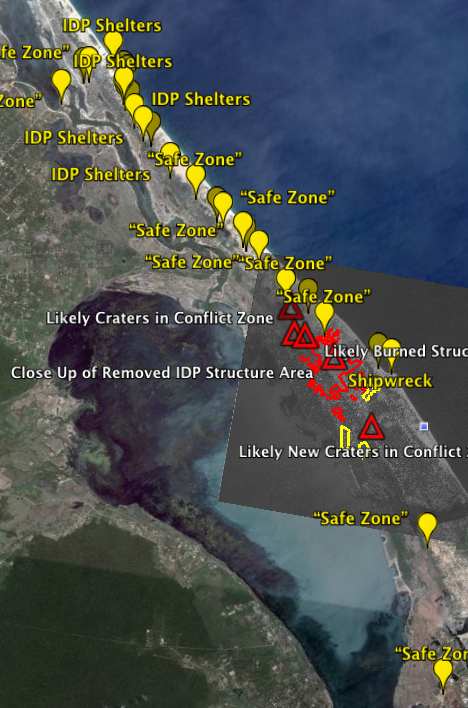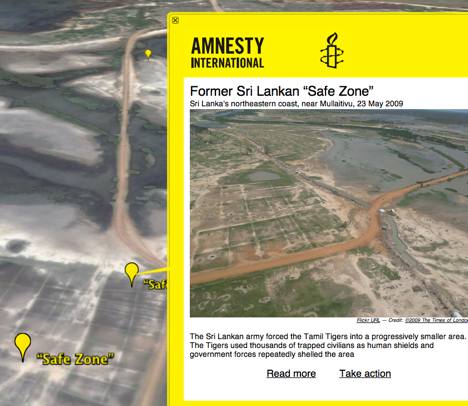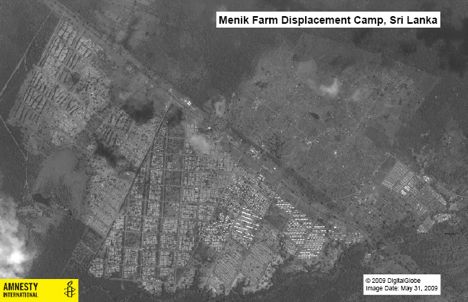Fresh satellite imagery can be a compelling tool for mobilizing public opinion, by allowing public scrutiny of regions difficult to access due to war, natural disaster or government policy. Most recently in Gaza, but also in Zimbabwe, Darfur and Burma, we have been able to see the large scale effects of humanitarian- and human rights crises from space. The US Holocaust Memorial Museum (USHMM), UNOSAT and the American Association for the Advancement of Science (AAAS) have been at the forefront of such initiatives.
Now, Amnesty International has teamed up with the AAAS to highlight the humanitarian crisis in Sri Lanka, as civilians face the brunt of the end-game in a decades-long civil war. The result is an elaborate KML network link with satellite imagery overlays, analysis and georeferenced photos, produced by AI USA’s Science for Human Rights project:

AAAS’s involvement comes from their own Science and Human Rights Program, which has already produced a report based on DigitalGlobe imagery it commissioned of Sri Lanka’s coastal “safe zones” in May 2009. Another recent DigitalGlobe image shows Menik Farm, a burgeoning inland camp for internally displaced persons (IDPs) built by the Sri Lankan government. Both images are included as superoverlays in the Google Earth file.
On top of this context, Amnesty International USA has added a series of georeferenced photographs taken from a low-level flight over the “safe zones” where Tamil Rebels had held their last stand, using civilians as human shields as they were shelled by government forces. Overlaid on the imagery commissioned by AAAS, it makes for a compelling tour of the surprisingly compact region.
Because I helped create the KML for Amnesty International’s georeferenced photos (using Google Outreach’s ever-useful Spreadsheet Mapper) I’ve spent a good deal of time in the area recently. Here are some of the surprises:
There is a remarkable shipwreck on the coast, not visible in Google Earth’s base DigitalGlobe imagery from 2005, but definitely there on AAAS’s overlay. It is also clearly visible in some of the flyover photos:

Also remarkable is how easy it is to cross-reference the landmarks on Google Earth with those in the fly-over photos:

Finally, Menik Farm. Google Earth’s base imagery here is the default 15-meter resolution kind, and it doesn’t at all prepare you for the massive city that has sprung up here virtually overnight, as the overlay clearly shows. Note too, to the East, a rather beautiful set of geometrical patterns containing what I presume are pre-existing farming settlements, though they seemingly were carved out of forested area.

Clearly, this Google Earth file adds an accessible sense of scope to the crisis. It’s great that Amnesty International is embracing virtual globes as a communications tool. Their post announcing the layer should be up soon. (Posted now with permission).